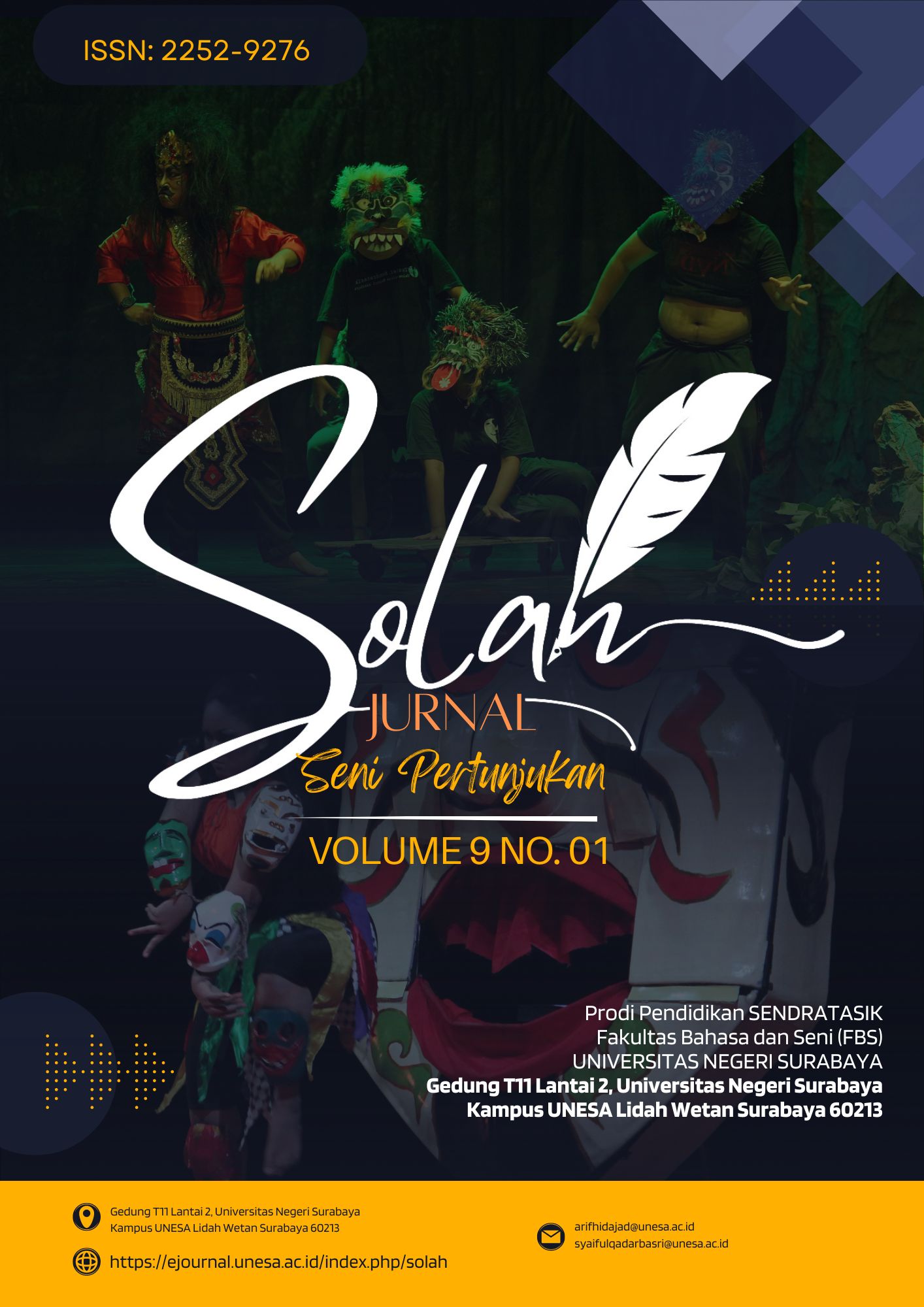Array
Keywords:
Puputan, Pamekasan Women, DramaticAbstract
The phenomenon that will be raised in this work is about the history of Puputan Pamekasan's war against Mataram where Madurese women, especially Pamekasan, had an important role in fighting the Mataram kingdom. In the Puputan war there were women who fought, that's when the woman would join the war to help the man from among the common people who also participated in the war. The appropriate and appropriate title in this choreography, "Lober", means in Indonesian "finished, finished". The focus in the creation of the dance work "Lober" is divided into two, namely form and content. The form contains the concept of dramatic type dance, while the content tells the story of the toughness of Pamekasan women, when the man who fights experiences defeat that's when the woman will join the war to help the man by risking his body and soul to jointly maintain his power, even though in the end he still loses. The choreographer expressed the idea of using the Madurese dance style based on the construction method I by Jacquiline Smith.
In this dance work "Lober", the arranger uses live accompaniment with the collaboration of tong-tong (daul) and Madura gamelan musical instruments. The music of "Lober" the arranger combines the slendro-barreled gamelan musical instrument combined with a modern musical instrument, namely daul music. The writing of this thesis aims to describe the form of presentation of "Lober" dance including title, theme, synopsis, style, technique, makeup and clothing, dance music and supporting elements. The creation process is based on the theory of Y. Sumandiyo Hadi and Jacquiline Smith. The techniques and styles in this dance work use Madurese style derived from traditional forms of movement developed by processing the bodies of five female dancers in order to adjust the characters in this dance work.
Downloads
Downloads
Published
How to Cite
Issue
Section
 Abstract views: 67
,
Abstract views: 67
, PDF Downloads: 85
PDF Downloads: 85



